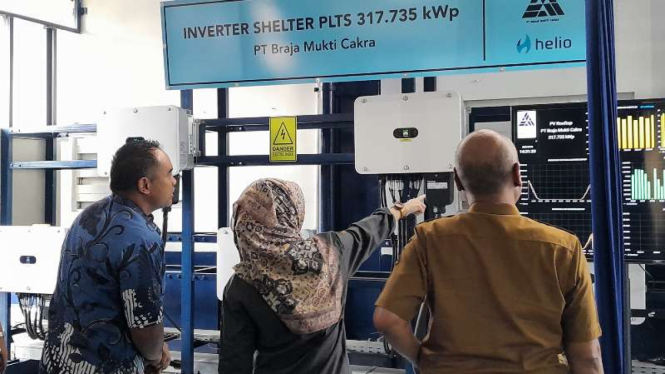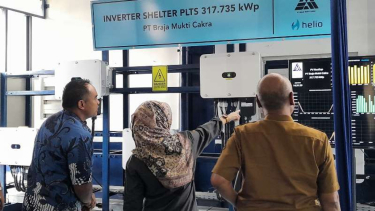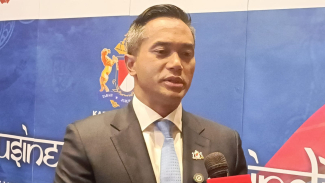Bakrie & Brothers Officially Inaugurates Rooftop Solar Power Plant
- Yeni Lestari/VIVA.
Jakarta – Bakrie & Brothers (BNBR) through its business unit Braja Mukti Cakra (BMC) on Tuesday officially inaugurated a rooftop solar power plant or PLTS in Bekasi, West Java.
This rooftop solar power plant is the result of BMC's collaboration with Krama Yudha Tiga Berlian (KTB) which is engaged in the automotive component manufacturing industry.
This PLTS with a capacity of 317.7 kWp (kilowatt-peak) will be able to produce up to 434 MWh (megawatt-hours) of electrical energy per year.
"Another BNBR business unit engaged in the renewable energy sector, Helio Synar Energi has focused its operations on the sustainable energy business and the green economy. Such as the manufacture of rooftop solar power plant," BNBR Deputy President Director Ardiansyah Bakrie said in Jakarta, on Tuesday.
According to Bakrie, the Rooftop Solar Power Plant is very suitable in Bekasi City, because the weather is very hot, "This (rooftop solar power plant) is suitable here. I just came to Bekasi City and indeed the weather is so hot,”
Peresminan PLTS Atap PT Braja Mukti Cakra (BMC).
- Yeni Lestari/VIVA.
Bakrie said that the construction of Rooftop PLTS at the BMC factory is BNBR's commitment and is fully supported by Krama Yudha Tiga Berlian to realize the transition to a greener, more sustainable, and environmentally friendly business.
This is in line with air pollution due to CO2 gas emissions that hit several cities in Indonesia.
"This is in line with the Government's program to encourage the use of new and renewable energy, with a net zero emission target by 2060 or sooner," Bakrie remarked.
As a visionary company led by the third generation, the Bakrie Group recognizes the importance of the global energy transition. This is not only for environmental sustainability but also as a form of legacy for future generations, Bakrie continued.
Therefore, it is also trying to make it happen by building rooftop solar power plants in factories and operational facilities within the Bakrie Group.
"After BMC, Helio will also soon build rooftop solar power plants in factories and other operational facilities within the Bakrie Group with a larger capacity," he explained.
"This is important, not only for environmental sustainability but also as a form of legacy for future generations," he added.
On the same occasion, President Director & CEO of Braja Mukti Cakra (BMC) V Bimo Kurniatmoko said that as part of the Bakrie Group and KTB business entities, his party sees it's time for the automotive component manufacturing industry to use renewable energy sources that are more environmentally friendly.
"This rooftop solar power plant will be an added value for the company in the customers’ point of view who not only come from Indonesia but also abroad," Kurniatmoko said.
"This step also contributes to the energy transition process in Indonesia. As a pioneer in the Bakrie Group, we feel proud."
Meanwhile, President Director of Helio Synar Energi (Helio) Ronald Nehemia currently the company continues to build solar power plant for utility and commercial, also industrial scales.
As an initial contribution to industrial decarbonization, Helio will install rooftop solar power plant in other factories soon.
Helio is also collaborating with other Bakrie Group business units to develop a net-zero emission industrial estate to serve factories and manufacturing facilities that require a lot of electrical energy by utilizing solar and wind energy.
"With a capacity of 317.7 kWp (kilowatt-peak) or 434 MWh (megawatt-hour) per year, the rooftop solar power plant installed at BMC can reduce CO2 gas emissions by 415 thousand kg per year, or around 15,000 trees that must be planted to absorb that much CO2," Sinaga concluded.





















